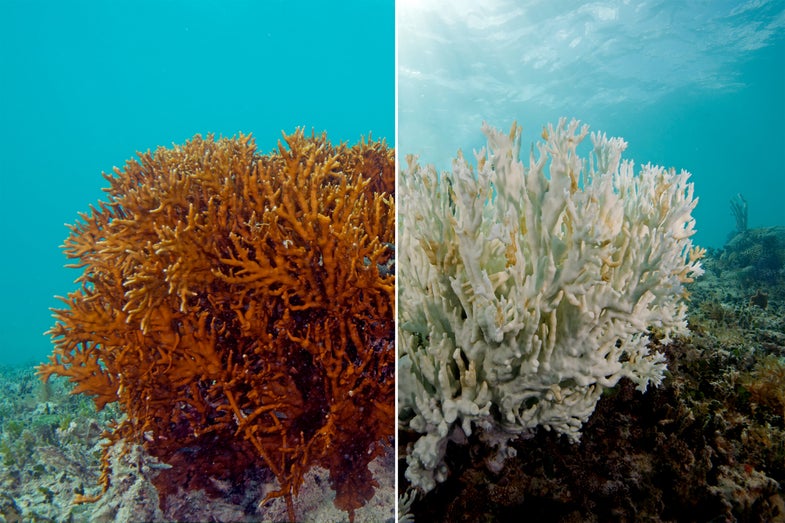The World’s Coral Is Experiencing A Massive Bleaching Event
Reef-er madness

Coral reefs are mesmerizingly beautiful and full of incredible research opportunities. Unfortunately, they’re also disappearing faster than ever.
Today, NOAA announced that the world is in the third recorded global coral bleaching event. That means that all across the world, coral reefs are being exposed to exceedingly warm seas, causing massive die-offs.
Coral bleaching happens when the symbiotic algae that live inside coral flee the reef as conditions change. Many different types of disruption can cause bleaching, from contaminated water to unusually hot or cold water temperatures, though many coral bleaching events are driven by excessively warm ocean waters. The lack of algae gives the coral a white, skeletal appearance, hence the term ‘bleaching’. Without the algae, coral are susceptible to disease, and while most corals can survive a mild bleaching, extended periods of high ocean temperatures leave them little room to recover, and many eventually die.

NOAA Infographic
“The coral bleaching and disease, brought on by climate change and coupled with events like the current El Niño, are the largest and most pervasive threats to coral reefs around the world,” Mark Eakin, NOAA’s Coral Reef Watch coordinator said in a statement. “As a result, we are losing huge areas of coral across the U.S., as well as internationally. What really has us concerned is this event has been going on for more than a year and our preliminary model projections indicate it’s likely to last well into 2016.”
This coral bleaching event started in late 2014, and has continued into this year with no signs of abating. NOAA scientists predict that by the end of this year, around 95 percent of coral reefs in the United States will be exposed to conditions that favor coral bleaching. The BBC reports that 35 percent of coral reefs in the world will likely be affected, with an estimated 4,633 square miles of coral reefs in mortal danger.
There have only been two other coral bleaching events that have affected the entire world, one in 1998 and one in 2010, both years that also had warm sea temperatures.
The loss of coral reefs would be a blow to the already troubled ocean biosphere.
“One in every four species of fish live on a coral reef, there are over a million species that live on coral reefs, at least two-thirds of them are pretty unknown to science,” Ove Hoegh-Guldberg, director of the Global Change Institute at the University of Queensland told the Washington Post, “Coral reefs provide food and livelihood to 500 million people.”

American Samoa

Before

During

After

Fire Coral

Examining A Bleached Reef